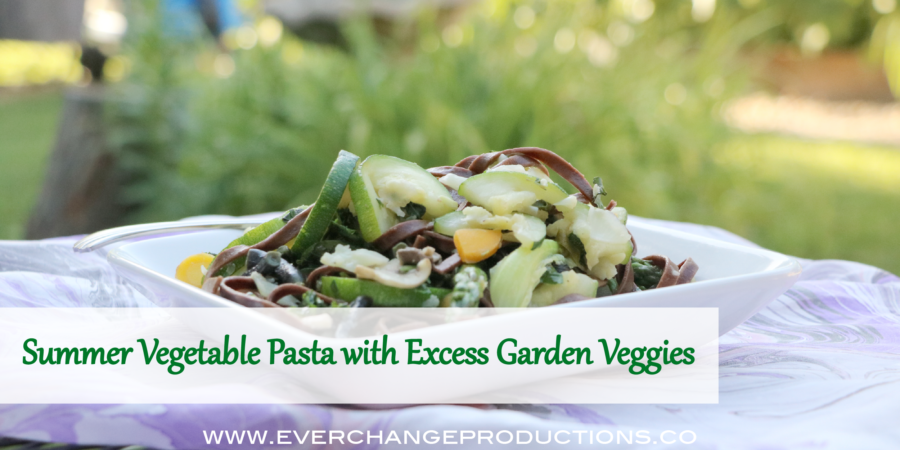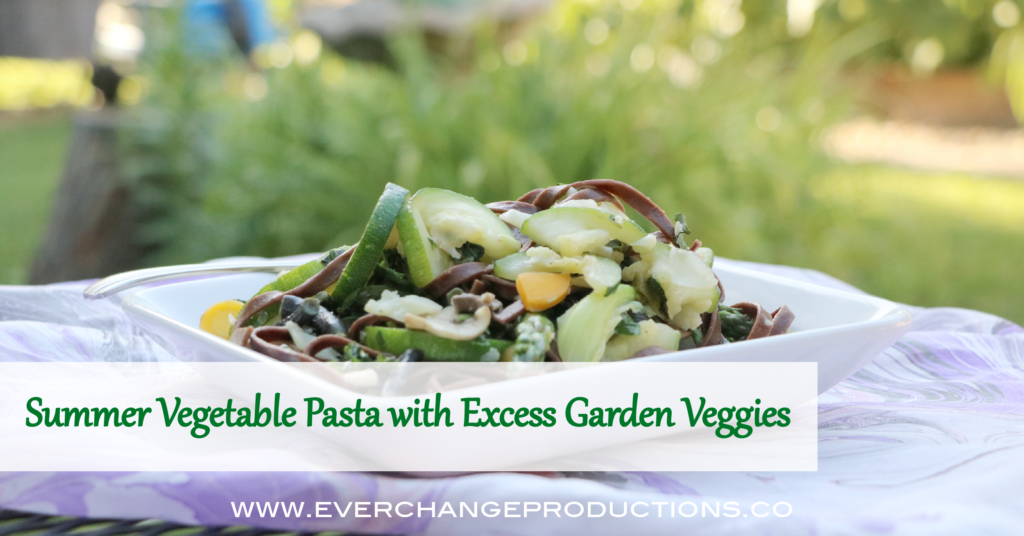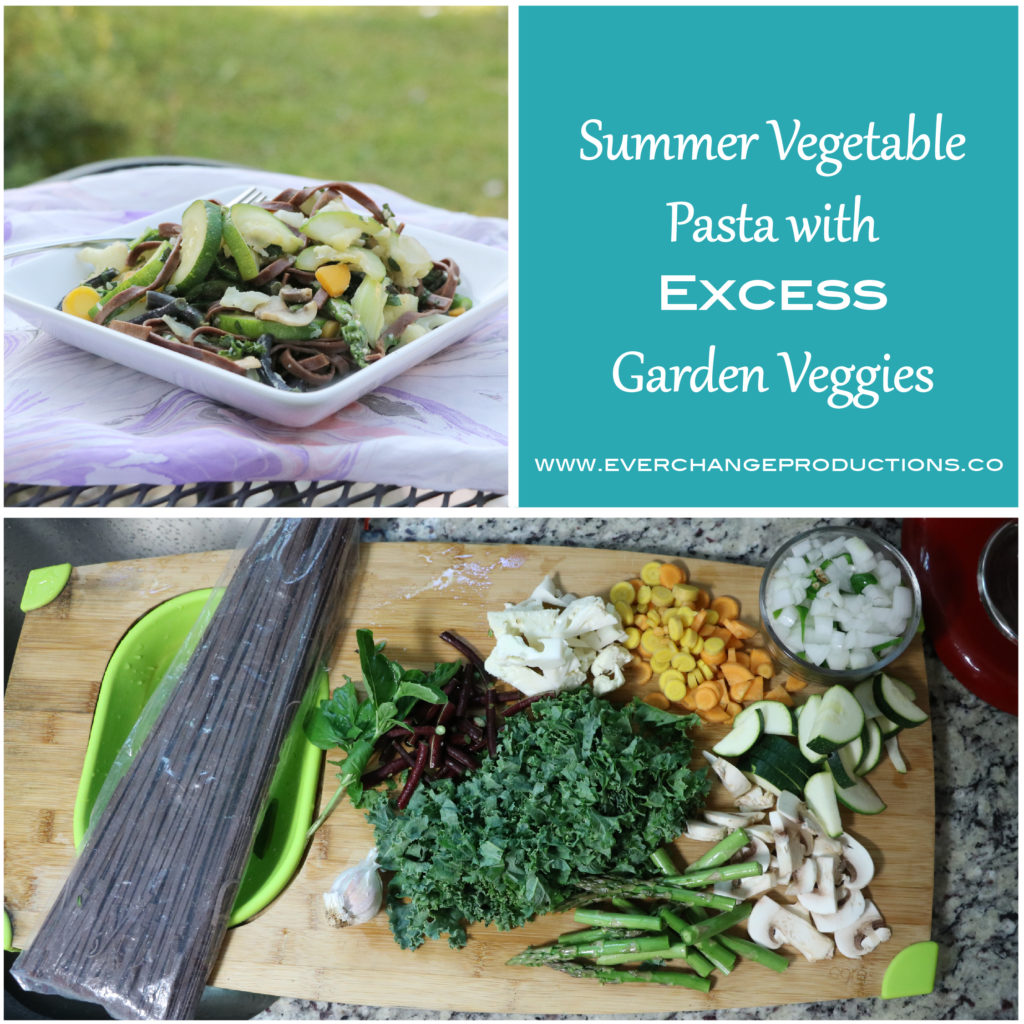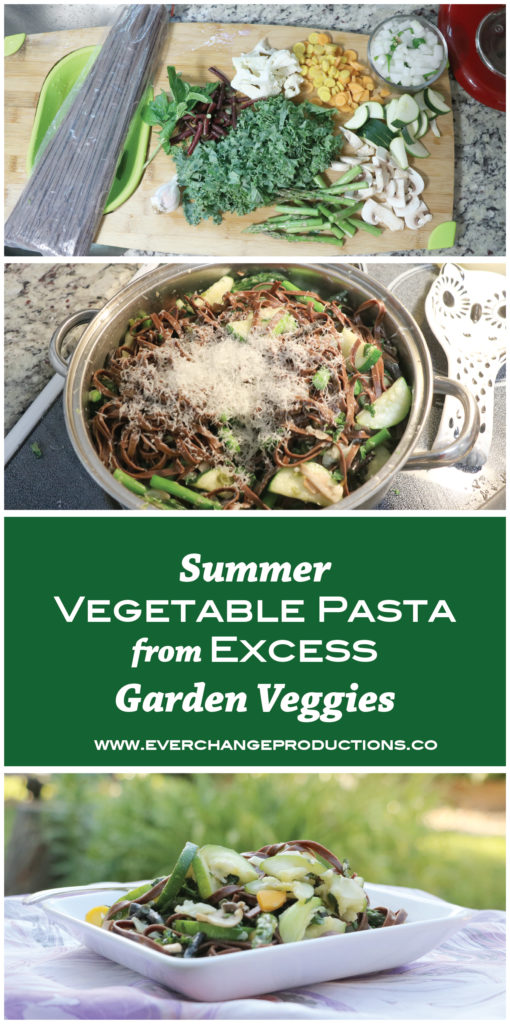Favorite Recipes Featuring Local Food
Not only is vegetable pasta healthy, but also it’s a great way to use a variety of vegetables either from the garden or leftover in the fridge.
My mom and I spent the last few months, coming up with 12 recipes that feature local, seasonal food. We put those recipes in a calendar to give people ideas to cook each month with seasonal produce. To inspire people in Oklahoma to try more local food, we developed a month by month recipe calendar that features local, seasonal produce in unique ways. Check it out!
In addition to those 12 recipes, we also made Grilled Peaches, Blueberry Crumble, Breakfast Casserole and in this post we’ll share Summer Vegetable Pasta Recipe.
How to Avoid Over Planting
If you want to avoid all the work of handling extra produce, it’s best to avoid over planting all together. Below is a list of guidelines to follow when deciding how many seeds to plant per person. These numbers can be adjusted depending on your personal tastes. And if you’re interested in succession planting, then you can plant these numbers for each round of growing time.
- 20 Peas
- 20 Pole Beans
- 15 Carrots
- 10 Beets
- 7 Radishes
- 6 Corn
- 4 Sweet Peppers
- 4 Tomatoes
- 4 Lettuce/Spinach
- 1-2 Zucchini/Squash
Using Excess Garden Vegetables
No matter how long you’ve been gardening, there will come a time that you grow too much of any given produce. Fruit trees, peppers, tomatoes, squash, cucumbers are especially prolific. What do you do with that produce? Throw it away? Compost it? Donate? The best thing to do, if you don’t donate, is to get creative and find different ways to use them up.
Canning
Canning is another way to enjoy off-season produce. Canning vegetables and fruits includes packing fruits and vegetables in a glass jar and sealing them with lids to prohibit bacteria growth. Scan your grocery stores for inspiration for all the canning possibilities.
Freezing
Broccoli, cauliflower, spinach, onions, peas, squash, carrots, corn, artichokes, eggplant, mushrooms, and brussels sprouts all freeze well. It’s a good idea to blanch the produce first before placing it into airtight reusable silicon freezer bags. It’s best to label each bag with its contents and freeze date. Consume the oldest frozen food first to avoid waste from freezer burn, Freezer burn can start as soon as three months even with proper preparation.
Compost
Other than donating, getting creative and avoiding over planting, compost is the best thing you can do with leftover vegetables. Composting has incredible benefits for your garden. Even produce that is overripe, spoiled, moldy, bruised, or nibbled on by garden pests is perfect for any compost pile.
Composting is super easy and doesn’t require a sophisticated set up. If you’re interested in composting, but don’t know where to start, subscribe for access to a free quiz and find the best composting option for you.
How to Use Excess Cucumbers
Cucumber plants are prolific growers when they’re in their prime. If you or your family doesn’t like cucumbers, making pickles is a great alternative. Learn how to make pickles with extra cucumbers.
If pickles aren’t your thing, check out these 16 ways to use excess cucumbers.
How to Use Excess Tomatoes
Tomatoes are another prolific plant that can be overwhelming when you’re trying to find ways to use them up before they spoil. Here is 25 ways to use all those extra homegrown tomatoes.
How to Use Extra Hot Peppers
At certain times of the year, hot peppers grow like crazy. You can only eat them plain so many times before your mouth sets on fire, so here are 9 other ways to use hot peppers.
How to Use Leftover Vegetables
Edible Math Activities
Use leftover vegetables with this is a kid-friendly activity to use as a teaching tool. Kids can learn more about names of different kinds of foods, counting, colors, tastes, smells.
Pumpkin Guts
Thousands of pumpkins are bought for a variety of activities including painting, carving, using the insides for recipes. But what happens to the remainder of the pumpkin, once we use what we want? This post shows a variety of ways to use the entire pumpkin.
Cooking Garden Vegetable Recipes
As I mentioned, finding new recipes is a great way to try new food and use up excess vegetables.
This summer veggie pasta is one way to mix your favorite veggies into one tasty dish.
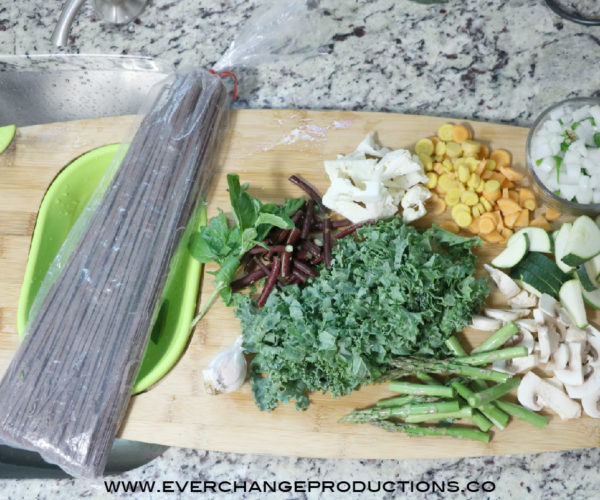
| Prep Time | 20 minutes |
| Cook Time | 15 minutes |
| Servings | servings |
- 1 onion
- 1 green pepper
- 1 bunch asparagus
- 2 medium zucchinis
- 1 package mushrooms
- 1/2 head cauliflower
- 1 bunch kale
- 1 bunch green beans
- 2 cloves garlic
- 2 carrots
- pinch basil
- 1/2 tsp salt
- 1/2 tsp pepper
- 1/2 stick butter
- Parmesan cheese
Ingredients
|  |
- Bring salted water to a boil
- Chop veggies into bite sized pieces
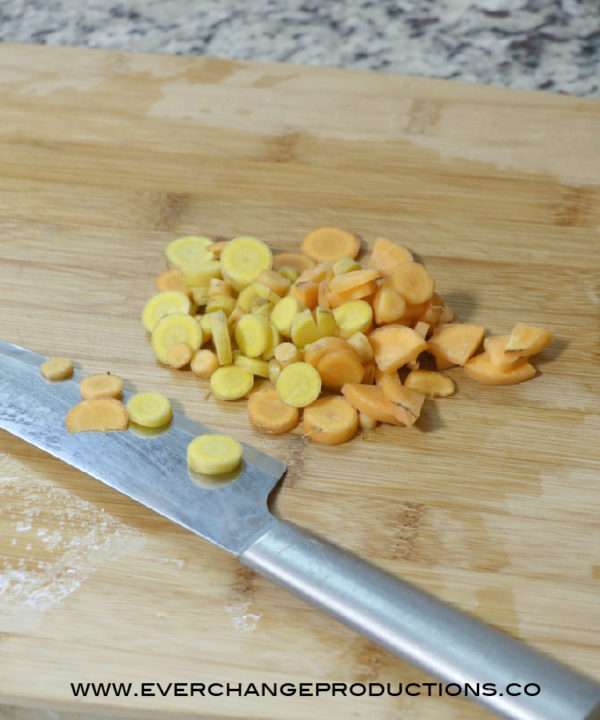
- Saute the onion and pepper in butter
- Add carrots and green beans to saute for 2 minutes
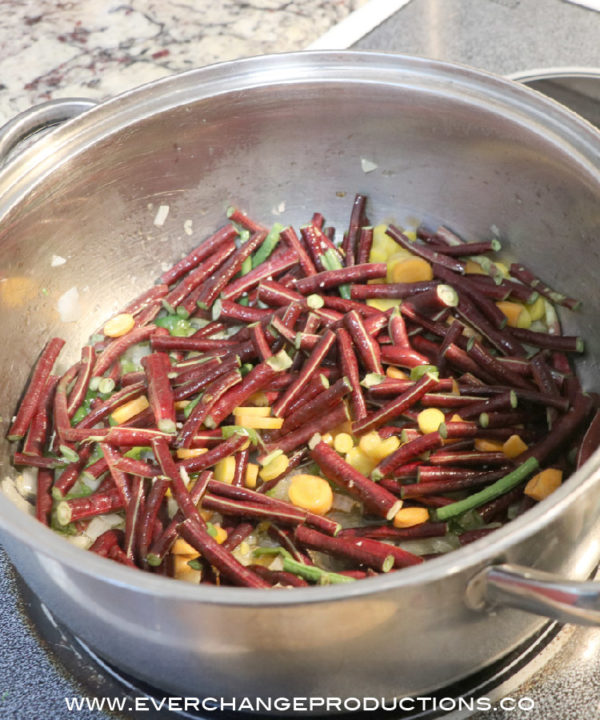
- Add carrots for 2 minutes
- Add zucchini, salt and pepper. Saute for 2 minutes
- Add mushrooms, asparagus and kale. Saute until mushrooms are tender and greens are bright.
- Toss in noodles, add basil and grate Parmesan cheese on top.
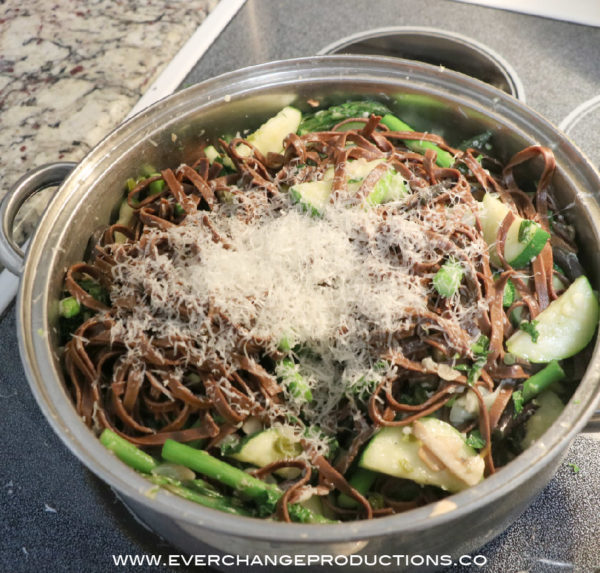
- Serve and Enjoy!
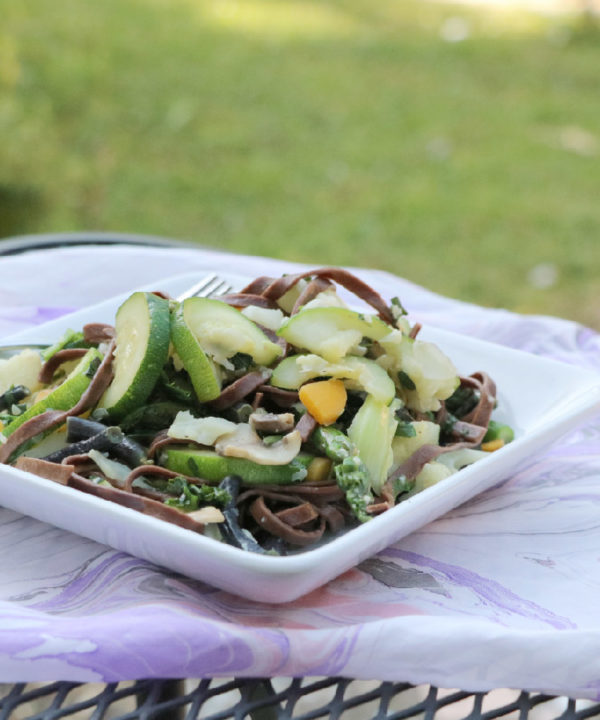
Don’t forget to pin for later!
